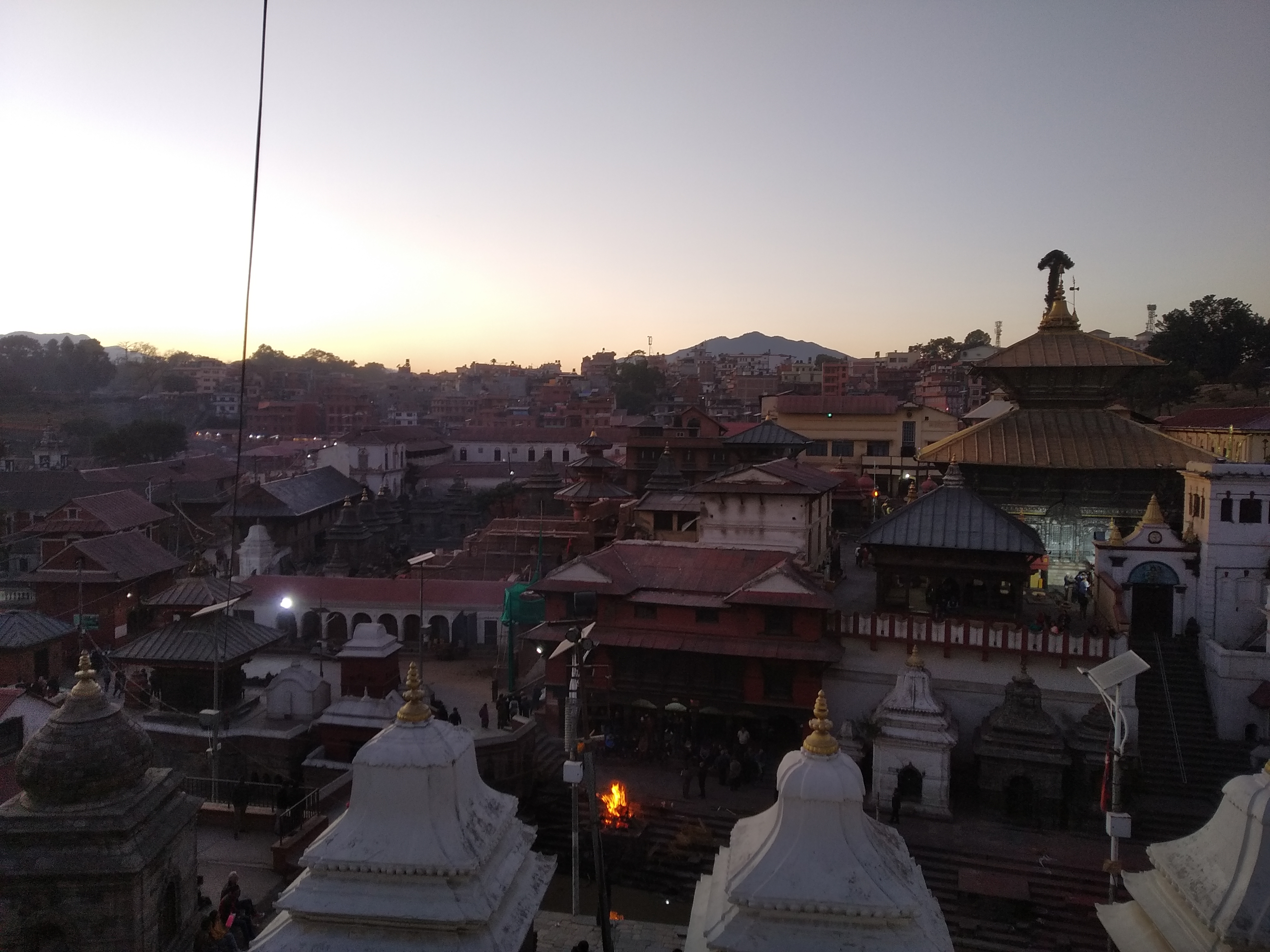This is an old revision of this page, as edited by Anirudh777 (talk | contribs) at 10:34, 7 July 2006 (→External links). The present address (URL) is a permanent link to this revision, which may differ significantly from the current revision.
Revision as of 10:34, 7 July 2006 by Anirudh777 (talk | contribs) (→External links)(diff) ← Previous revision | Latest revision (diff) | Newer revision → (diff) Moksha (disambiguation).Moksha (Sanskrit: मोक्ष, liberation) or Mukti (Sanskrit: मुक्ति, release) refers, in Indian religions, to liberation from the cycle of death and rebirth and all the suffering and limitation entailed in embodied worldly existence. In higher Hindu philosophy, it is seen as a transcendence of phenomenal being, of any sense of consciousness of time, space, and causation (karma). It is not seen as a soteriological goal in the same sense as in, say, a Christian context, but signifies rather a dissolution of the sense of self as an egoistic personality - the undoing of conditioned mentality-materiality or nama-roopa (lit. name-form). Liberation is achieved by (and accompanied with) the complete stilling of all passions - a state of being known as Nirvana. Buddhist thought differs slightly from the Advaita Vedantist reading of liberation. Jainism and Surat Shabda Yoga traditions also believe in Moksha.
Hinduism
In Hinduism, liberation occurs when the individual soul (human mind/spirit) or atman recognizes its identity with the Ground of all being - the Source of all phenomenal existence known as Brahman. It is technically incorrect, nonetheless, to view them - both often spoken of as Self - as a monist being of sorts, something possessing substances, qualities or attributes. In actuality, Hindu scripture like the Upanishads and Bhagavad Gita, and especially the non-dual Hindu school of Advaita Vedanta, say that the Self or Super-Soul is beyond being and non-being, beyond any sense of tangibility and comprehension. Moksha is seen as a final release from one's worldly conception of self, the loosening of the shackle of experiential duality and a re-establishment in one's own fundamental nature, though the nature is seen as ineffable and beyond sensation. The actual state of salvation is seen differently depending on one's beliefs.
- In Advaita philosophy, the ultimate truth is not a singular Godhead, per se, but rather is oneness without form or being, something that essentially is without manifestation. Moksha is union with this oneness. The concepts of Moksha and Buddhist Nirvana are comparable. Indeed, there is much overlap in their views of consciousness and attainment of enlightenment. For liberal Advaitists, Moksha is seen as complementing, rather than denying, the 'voidness' of Buddhism.
- In dualist and qualified advaitic Hinduism, Moksha means union or close association with God. See Krishnology.
Means to achieve Moksha
There are believed to be four yogas (disciplines) or margs (paths) for the attainment of Moksha. They are the ways of selfless work (Karma Yoga), of self-dissolving love (Bhakti Yoga), of absolute discernment (Jnana Yoga), and of 'royal' meditative immersion (Raja Yoga). Different schools of Hinduism place varying emphasis on one path or other, some of the most famous being the tantric and yogic practices developed in Hinduism. Today, the two major schools of thought are Advaita Vedanta and Bhakti branches.

- Bhakti sees the Self as God, most often a personified monotheistic conception of Vishnu, Shiva or Devi (the Mother Goddess). Unlike in Abrahamic traditions, this monotheism does not prevent a Hindu from worship of other aspects of God, beings or teachers, as they are all seen as rays from a single source. However, it is worthy of note that the Bhagavad Gita condemns worship of demigods, as it does not lead to Moksha. The concept is essentially of self-dissolution in love, since the ideal nature of being is seen as that of harmony, euphony, its manifest essence being love. By immersing oneself in the love of God, one's Karmas (good or bad, regardless) slough off, one's illusions about beings decay and 'truth' is soon known and lived.
- Vedanta finds itself split three-fold, though the dualist and modified non-dualist schools are primarily associated with the foregoing thought of Bhakti. The most famous today is Advaita Vedanta, a non-dual (i.e. no separation between the individual and reality/God/etc.) perspective which often played the role of Hindu foil to contemporary Buddhist philosophy. In general, it focused on intense meditation and moral realignment, its bedrock being the Upanishads, Brahma Sutras and the teachings of its putative founder, Adi Shankara. Through discernment of the real and the unreal, as a peeling of the layers of an onion, the sadhak (practitioner) would unravel the maya (illusion) of being and the cosmos to find nothing within, a nothingness which was paradoxically being, and transcendentally beyond both such inadequate descriptions. This was Moksha, this was atman and Brahman realized as the substance and void of existential duality.
Moksha in the sacred Hindu temple dance, as in the classical Indian dance too, is symbolized by Shiva raising his right leg, as if freeing himself from the gravitation of the material world.
One must achieve Moksha on his or her own. An Arhat or a Siddha may inspire, but does not intervene.
Buddhism
Jainism
In Jainism, Moksha and Nirvana are the same. When a soul (atman) achieves Nirvana, it is released from the cycle of births and deaths, and achieves its pure self. It then becomes a Siddha (literally one who has accomplished his ultimate objective), and hence a god, worthy of worship.
In Jainism, attaining Moksha requires annihilation of all karmas, good and bad; because if karma is left, it must bear fruit.
Surat Shbda Yoga
In Surat Shabda Yoga beliefs, attaining Self-Realization and above results in Jivan Moksha/Mukti (liberation/release from the cycle of karma and reincarnation while in the physical body – spiritual freedom here and now).
See also
External links
- Buddha & Moksha
- Buddhist Literature on Moksha
- Moksha English Dictionary from Webster's Online Dictionary
- MOKSHA French rock band
- Bhagwaan Gopinathji
- Site discusses theistic view of moksha.
